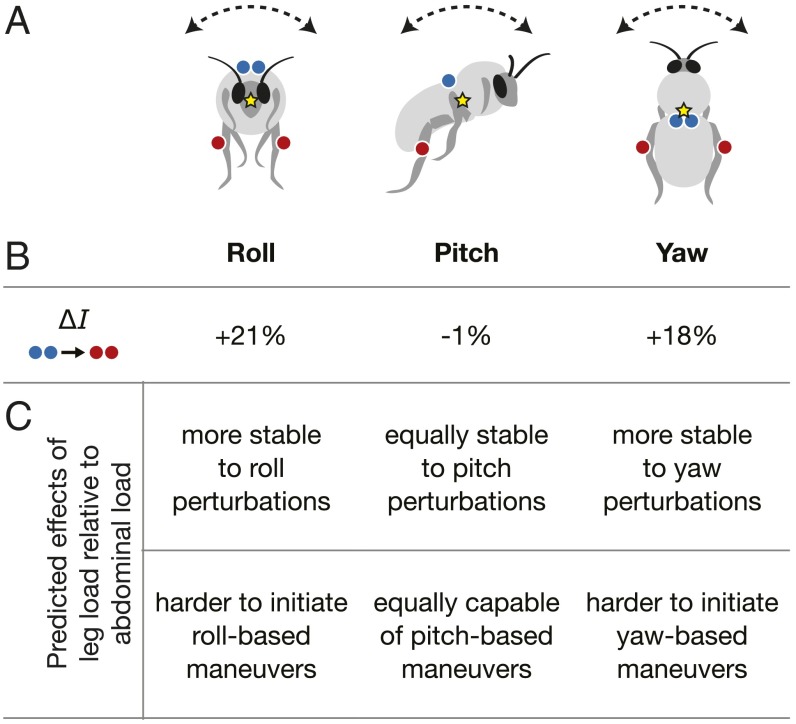Fig. 1.
Load treatments and their predicted effects on body moment of inertia, maneuverability, and stability. (A) Load treatments consisted of either attaching a pair of small steel ball bearings to the dorsal surface of the anterior-most plate of the abdomen, simulating a nectar load (blue) or attaching a single ball bearing to the corbicula (“pollen basket”) on the outer face of each hind tibia, simulating a pollen load (red). Yellow stars indicate the approximate location of the COM, around which the body rotates, based on results of the inertial model illustrated in Fig. S1. (B) Estimated change in moment of inertia (I) around the three rotational axes when a load is carried on the legs vs. on the abdomen. Values are derived from an inertial model of a bumblebee body subject to each load treatment (see Table S1 for MOI values). (C) Predicted consequences of the changes in MOI with leg loading (compared with abdominal loading) on flight stability (Upper) and maneuverability (Lower).

